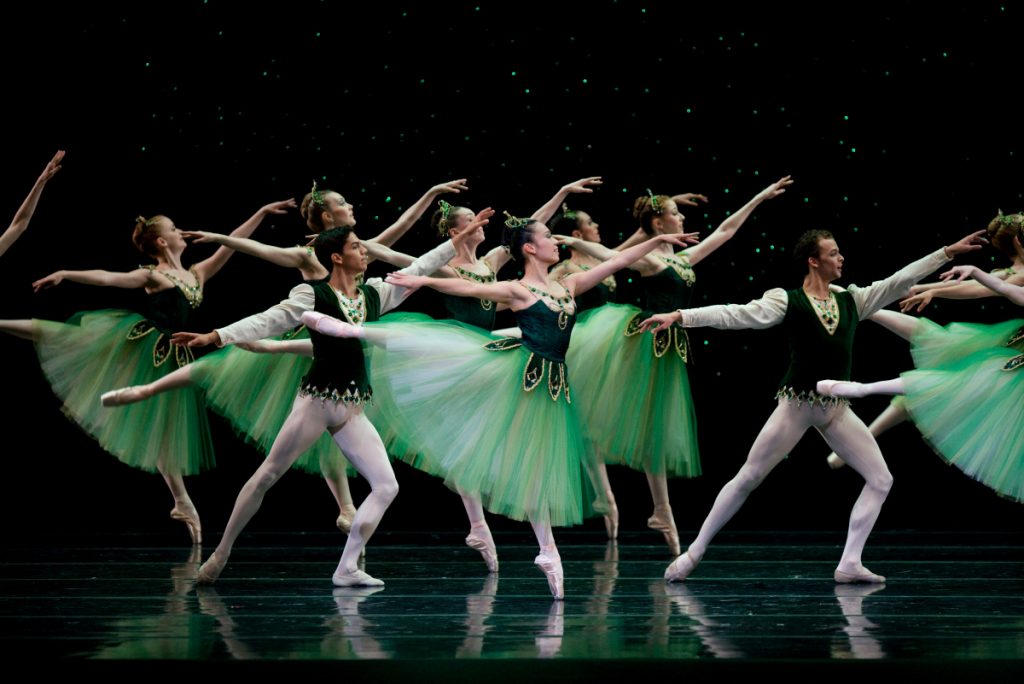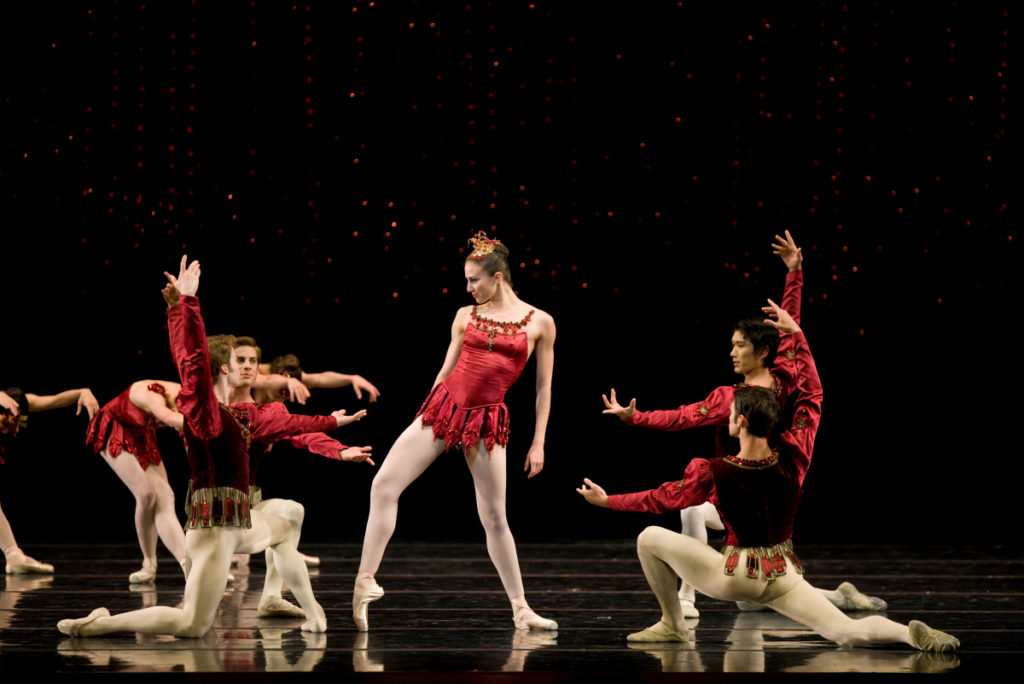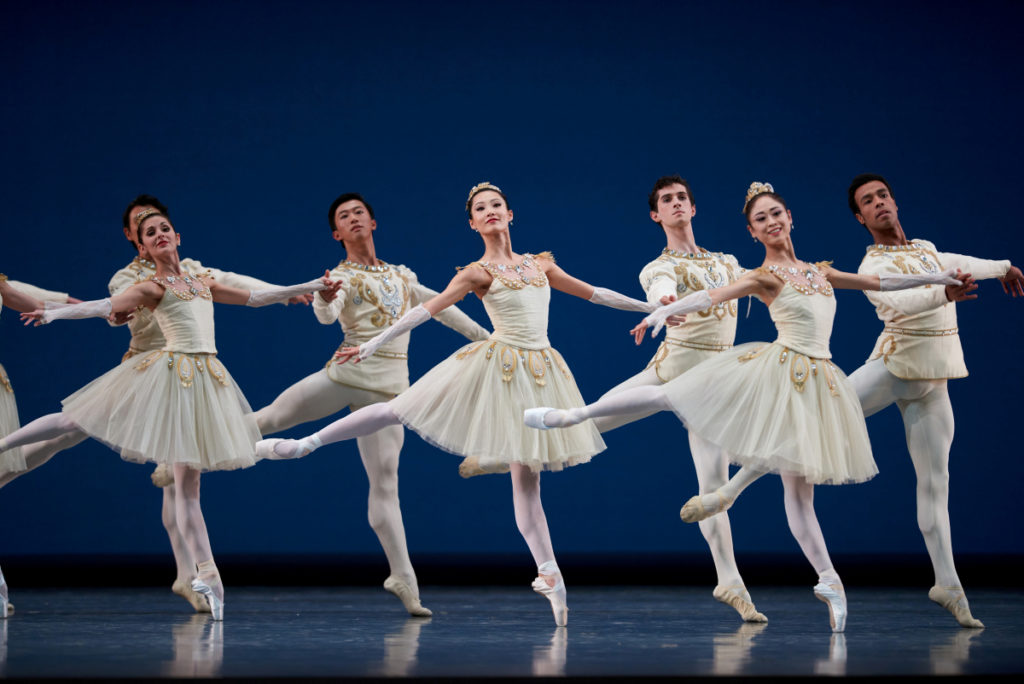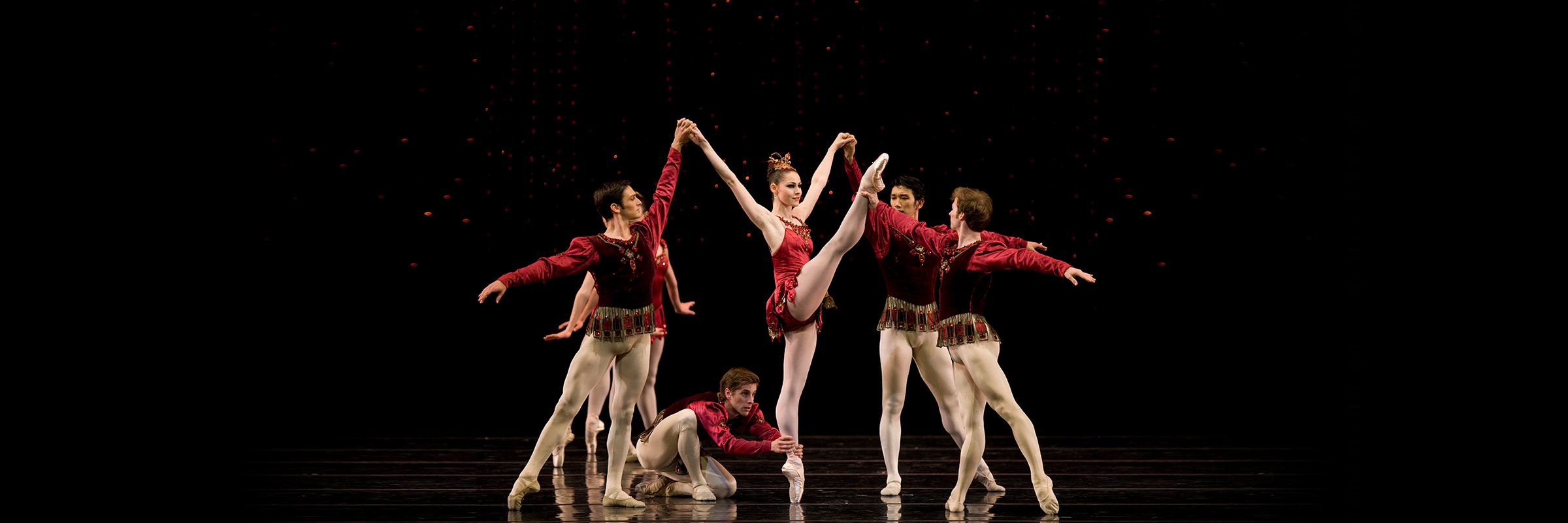Your Ultimate Guide to Jewels
Balanchine’s Sparkling Masterpiece
George Balanchine’s Jewels was part of SF Ballet’s 2021 Digital Season.
What Is It? George Balanchine’s 1967 evening-length masterpiece, inspired by displays at New York City jeweler Van Cleef and Arpels, is made up of three separate ballets—Emeralds, Rubies, and Diamonds. It both plays with those gemstones as inspiration, as well as explores ballet style in France, the United States, and Russia.
Who’s It For? Anyone who enjoys breakfast at Tiffany’s (or Van Cleef and Arpels), travel to Paris, New York, or Saint Petersburg, or can’t resist a bit of sparkle.
EMERALDS

What Am I Seeing? Emeralds, a forest green meditation in long, Romantic-style skirts, draws its audience into a kind of self-contained world. Influenced by the French style of ballet—decorous, restrained, pristine—this ballet is the most reserved of the three, evoking a dreamy, underwater mood.
What Am I Hearing? Excerpts from Gabriel Fauré’s Pelléas et Mélisandeand Shylock. Perhaps best known for being Maurice Ravel’s teacher, Fauré’s work inspired many of the musical trends of the early 20th century.
What Should I Look For? First, look for the “bracelet” solo, which happens about seven minutes in. It begins with a series of arm and wrist gestures, as if she’s wearing a bracelet. It should seem as if the dancer’s arm moves her, rather than that she moves her arm. And keep an eye out for the two pas de deux: one in which the ballerina enters at a stately walk with her partner, hands touching, but never grasping; and one in which the ballerina’s opening passion and confusion is slowly, subtly tamed by her partner.
RUBIES

What Am I Seeing? The middle section of the evening, Rubies, is like Times Square at midnight: bright lights, rushing crowds, a touch of jazz, and just a hint of danger. A soloist woman—often, if not always cast as a very tall dancer—and a petite couple lead a corps de ballet of twelve in a ballet that revels in turned-in legs, jutting hips, and syncopated accents.
What Am I Hearing? Igor Stravinsky’s Capriccio for Piano and Orchestra, written in 1929. Though Balanchine and Stravinsky had a longstanding partnership, and Stravinsky wrote many ballets for Balanchine, this wasn’t one of them. And, ironically, though it’s come to be understood as the “American” section in the Jewels triptych, the piece was written well before Stravinsky moved to the United States.
What Should I Look For? Jazz! And bit of sass. Everything here should be bigger, faster, jazzier, sexier than Emeralds. It’s showing off a new kind of American dancer in contrast to the French Romanticism we just saw. The central pas de deux can catch you by surprise every time, with a kind of humor and playful sensuality. It should be expansive and then crisp, precarious, but self-assured.
DIAMONDS

What Am I Seeing? The final movement of the ballet, Diamonds, transports us to Imperial Russia. This ballet is Balanchine’s homage to the grand style of Marius Petipa, the father of classical ballet, using his sense of scale and amplitude. The central pas de deux, made for Balanchine muse Suzanne Farrell, almost seems like what Odette from Swan Lake might have danced were she were from the 20th century rather than the 19th.
What Am I Hearing? Four sections of Peter Ilych Tchaikovsky’s Symphony No. 3 in D Major. It’s only fitting that Balanchine would choose Tchaikovsky for this evocation of Imperial Russia, as Petipa and Tchaikovsky together created some of the world’s most famous ballets.
What Should I Look For? The pas de deux is really the heart of Diamonds. Notice that while there’s an undercurrent of desire between the couple, the ballerina remains a bit distant, almost cold, unpossessable. Watch for the very end: it’s a moment of worship, of devotion to a brilliant, inaccessible diamond.
By Jennie Scholick, PhD
Header image: San Francisco Ballet in Balanchine’s Rubies. Choreography by George Balanchine © The Balanchine Trust // © Erik Tomasson








